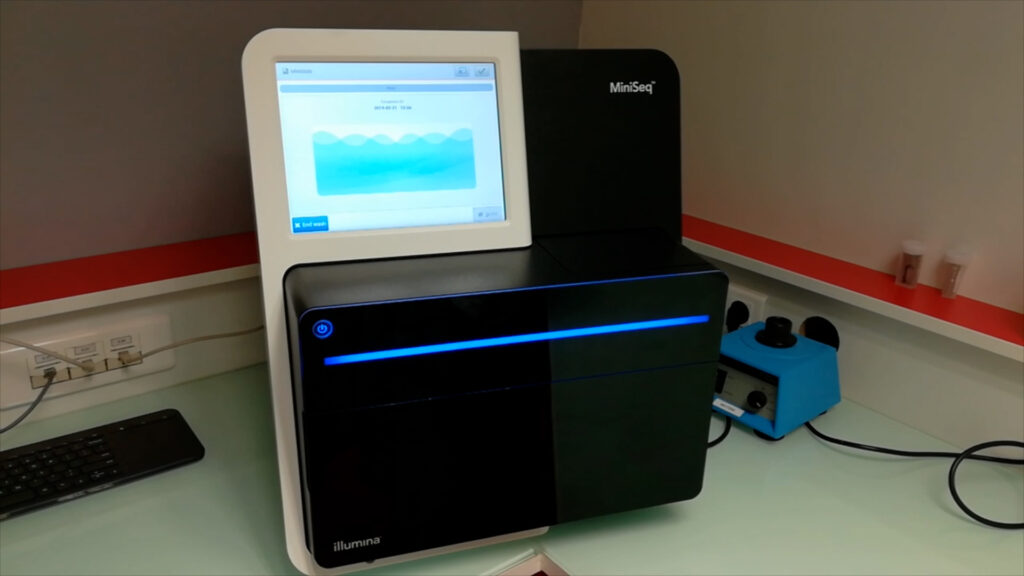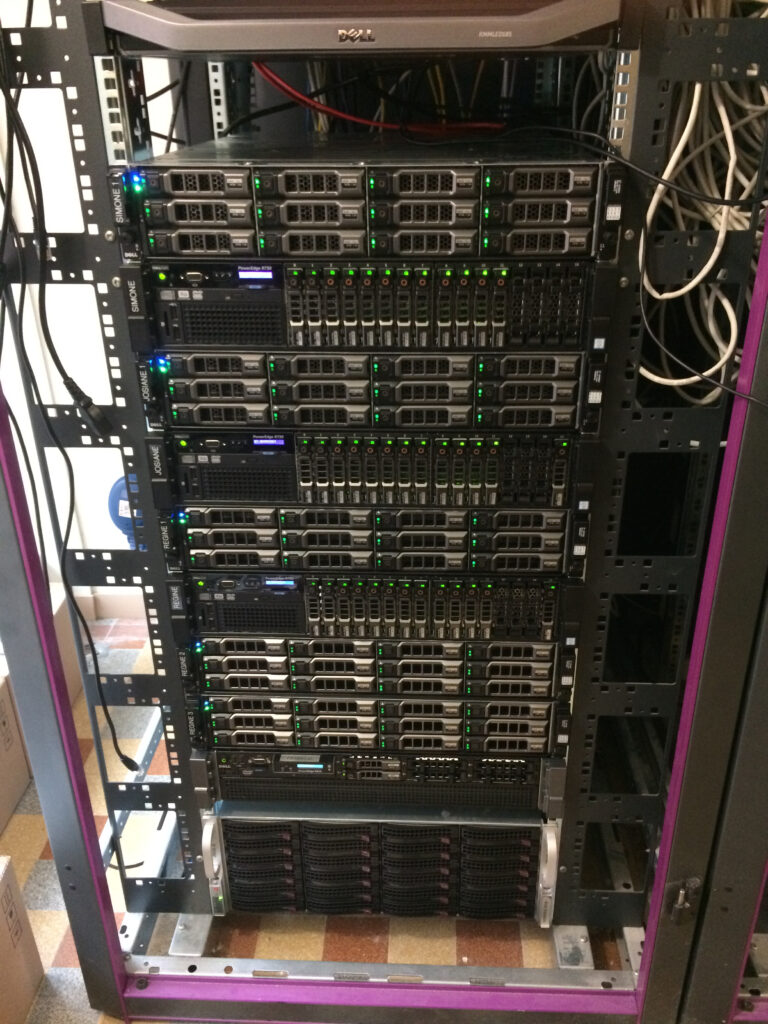3D imaging facilities
Our Shinning 3D Einscan-Pro + and two Artec optical scanners (Eva and Micro) allow for the non-invasive and semi-automated acquisition of 3D models from every single individual subfossil material, and can accommodate any object ranging within the centimeter to the meter size scale. Larger objects, such as complete archaeological sites, can also be scanned using precision photogrammetry with our DJI Phantom 4 Pro drone. Dedicated computing stations equipped with wide screens allow us to retrieve crucial information on the size and shape of the archaeological material studied, independent or prior to any genetic analysis. Finally, our Ultimaker 2 extended and Ultimaker S5 3D printers allow us to generate high-quality physical replicates that can be used both for teaching, research and outreach activities.
For further information about the conditions for accessing our Imaging instruments, please contact Xavier Mata (xavier.mata@univ-tlse3.fr).

Ancient DNA facilities
(c) C. Der Sarkissian
Our laboratory plays host to two fully-equipped ancient DNA facilities that have been entirely renovated in 2018-2020. Equipment and design are state-of-the-art, and tailored to the stringent quality requirements for manipulating ancient and degraded DNA molecules, including UV light exposure and positive air pressure that in combination help drastically limit contamination by modern DNA. Each ancient DNA facility consists of anterooms for dressing with personal protective equipment ; independent drilling rooms ; isolated DNA extraction rooms, and ; isolated pre-PCR rooms for constructing Illumina DNA libraries and/or preparing reaction prior to amplification. In addition to the ancient DNA facilities per se, disposable material and reagents are stored within dedicated rooms with restricted access. Individual specimens can be tracked along the whole experimental procedures through CASCADE, the open-source Laboratory Management Information System that we have developed to handle the exponentially growing number of fossils analyzed in ancient DNA labs and their metadata. Our large freezing capacities also allow for long-term storage of both DNA extracts, non-amplified DNA libraries and subfossil material.
While our ancient DNA facilities are mostly used internally, they can be opened to external collaborators, following a training period under strict supervision. For further information about the conditions for accessing our ancient DNA facilities, please contact Ludovic Orlando (ludovic.orlando@univ-tlse3.fr).
Molecular Genetics
(c) T. Suchan
Our laboratory provides entirely-new and fully-equipped facilities designed for implementing standard techniques in molecular genetics. These include an isolated clean laboratory designed for DNA/RNA extraction ; an isolated pre-PCR room for constructing Illumina DNA libraries and/or preparing reaction prior to amplification ; a general molecular laboratory for the purification of nucleic acids, their quantification, concentration, the estimation of their size profiles; their automated size selection and manipulation through Opentrons automatic liquid devices, and their amplification. In addition to standard equipment, our molecular laboratory is equipped with high-speed centrifuges, incubators, thermocyclers (including one for real time quantification), one BioAnalyzer instrument, one TapeStation instrument, one Capiler system Pippin Prep, one BioRuptor sonication device, one minus 80C freeze and 3 OpenTrons robots. In total, our molecular genetics facilities cover 250 square meters, spread across 7 different rooms. Two touchdown rooms can be used as basic offices during long incubation times and similar lengthy experimental steps.
The Ancient DNA facilities and the Molecular Genetics facilities are in two separate buildings, located within a two-minutes walking distance, in order to prevent carry-over contamination.

High-throughput DNA sequencing
Our laboratory is equipped with an Illumina MiniSeq instrument, which can produce 30 millions of sequence pairs overnight in a cost-effective manner. This considerably augments our productivity as DNA libraries can be quality controlled soon after they have been constructed. This instrument also opens for in-house production of data from target enriched DNA libraries as well as for the sequencing of ampliconic DNA libraries, such as those derived from metabarcodes. The production of large genome sequence data at population scales is outsourced to our partners both at the GenoToul platform and Genoscope, which are located in Toulouse and Evry, respectively. These platforms offer access to a range of high-throughput DNA sequencing machines, including Illumina (HiSeq2500/3000/4000/X5, NovaSeq), PacBio (Sequel) and nanopore (MinION & PromethION) instruments.
For further information about the conditions for accessing our MiniSeq instrument, please contact Andaine Seguin-Orlando (andaine.seguin@univ-tlse3.fr).

Computing resources
(c) CAGT servers – A. Lacombe
Our laboratory is equipped with enhanced computing power, including 8 individual informatic servers, providing in total an equivalent number of 704 CPUs, 7.8Tb of RAMs and 1.75Tb of disk storage. As a complementary calculation power, we have access to large computational clusters both at the University of Toulouse and Technical University of Denmark (DTU).